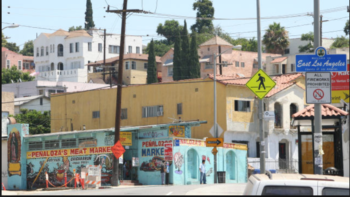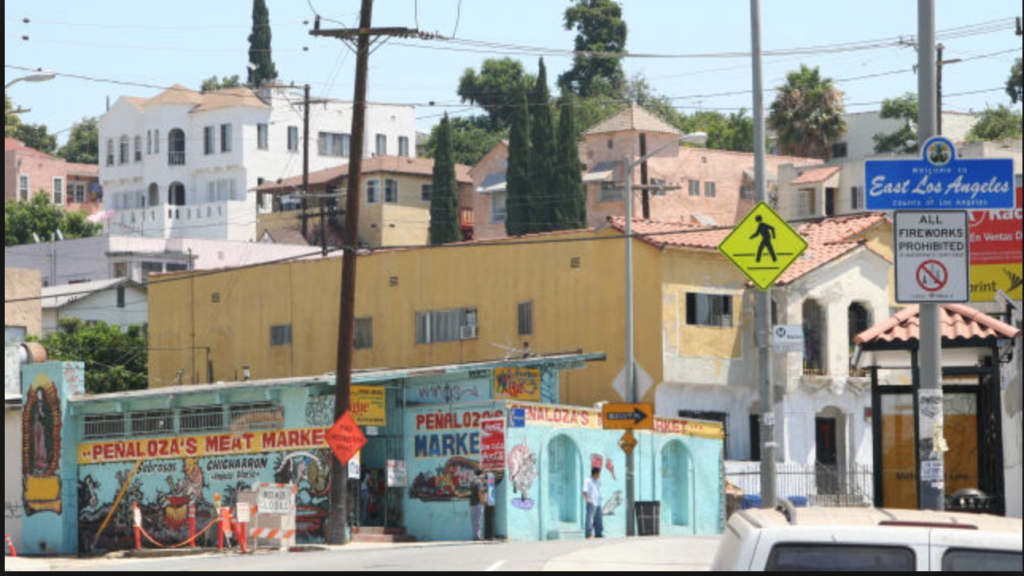Were we to envision a conservation and sustainability movement in America that could transcend, or at least straddle, partisan politics, regional, demographic and cultural boundaries what would it look like? What notes would it need to hit to stir climate change skeptics and ardent carbon tax advocates, globalists and nationalists, Iowa soybean farmers and South Beach condo dwellers, Detroit’s urban pioneers and Montana’s ranchers? What language, imagery, and vectors of everyday experience might persuade and ultimately activate such disparate folk to take up a common cause?
Given the current political and cultural climate, it would almost certainly not be the language of science. In a time when facts are malleable, scientific and data-based findings have lost a lot of their rhetorical punch. At a deeper level, science and scientific ways of knowing have ceded much of their cultural authority. In popular discourse, including “elite” media, “truths” about climate change are knitted into broader systems of belief that roughly track with partisan and cultural affiliations and values. People “believe”, or don’t believe, that human activity affects climate in much the same way they believe, or don’t believe, in human evolution, the safety of vaccines, or President Trump’s head count at his 2016 inauguration or Nessie, the Loch Ness monster for that matter. Belief or non-belief in “the science” of climate change is embedded in more diffuse and pervasive worldviews. It is not, despite scientistic creed, value neutral. Sorrowfully, I’d add from a fundamentally conservative cultural viewpoint, the science of things must swim in the same pond of moral relativism as other belief systems currently do.
I’d venture this has little to do with a lack of numeracy in our country or misapprehension about the scientific method, though a straight forward understanding of the difference between causality and correlation might be helpful in supporting meaningful conversations. Rather it speaks to the totalizing power of culture to shape our perceptions of reality. At a historical moment when multiple, often fractious, world views coexist even the “common” in common sense – that final, stalwart arbiter and court of appeal in American civil life – is on the ropes. There is a bitter irony here since the ethos of science is grounded in skepticism and doubt rather than “simple” belief regardless how messy and culturally mediated science actually is in practice. But scientists have not been terribly successful in translating this messy reality into winning narratives as Latour has observed.
So where might the center lie, or perhaps be built, in a world of where competing beliefs fight for primacy? What lingua franca of conservation and sustainability might speak to people from different sides of the environmental fence? It could perhaps be the language of landscapes. Landscapes have the virtue of being both abstract and concrete. They have the power and capacity to support a belief in something, (something that could be inclusive), country, region, city, town, community, place. Our emotional, imaginative and cultural connections to landscapes and places are anchored in material environments, in solid things like terrain, and geographic features, rocks, and soils, plant and animal communities and of course all things human-built.
We come to know landscapes through our senses, through sights, colors, sounds, smells, the character of light and the tactile feel of the ground beneath our feet. Landscapes have a parochial feel; they partake in the same social energy and historical specificity as “the local” or “place.” They splice together culture, history, “nature” and geography. The winding, off-grid streets of NYC’s West Village, the rash of sidewalk pocket gardens in brownstone Brooklyn, the field stone houses that populate Philadelphia’s Germantown neighborhood, the stone walls that trace long abandoned small farms in New England woods, the just-tilled red clay soil of rural North Carolina, the oceans of late Fall winter wheat in North Dakota, show us what landscapes might contain and how they can come to life in our imaginations. When it comes to inspiring belief or commitment to conservation and sustainability these sensory, experiential, lived and felt qualities give landscapes a leg up on more abstract domains like “the environment” or “biotopes” or “the climate”. [1]
Can landscapes be objects of conservation and sustainability around which a widely distributed and disparately positioned groups of people can rally? Perhaps. But only if we acknowledge that landscapes, like places, are malleable. They are by nature works in progress. And so ecumenical and grass roots efforts to promote conservation, sustainability and resiliency must tap into the ever-restless process of remaking the living history of landscapes and places.
Such projects would be conservative, with a small “c”, promoting active stewardship for elements of the material world, both natural and human-shaped, that form landscapes. They would cultivate sentiments that are both backward-looking and present-minded, bringing the past(s) into conversation with a present where massive extra-local social and environmental forces, e.g. gentrification, globalization, economic and demographic dislocation, desertification, rising sea levels, rising temperatures, the escalating frequency and intensity of wild fires, storms and floods, and etc. are in play. Conceptually they would not break off the “natural” world, or the “wild” from the human-built and human-shaped. Instead, they would take this basic planet-wide precept and reality of our current time (think “Anthropocene”) and localize it, make it parochial.
Taking an active hand in making landscapes sustainable reflects an enlightened kind of nativism, place-bound in its focus and character, deeply personal and deeply political. These very qualities are both a strength and weakness. Who gets to determine the contours of a landscape, its boundaries and its character? Who gets to say what elements should be protected? What elements added, subtracted? Even more radically what’s visible? I would suggest that for such projects to work they must be both socially sustainable and environmentally sustainable. The two go hand in glove. Can landscapes become the focal point for a politics of inclusion where social resiliency meshes with environmental resiliency? The prospect seems more promising than most.

What does this picturesque view of an East LA landscape (grabbed from a Google search) make explicit that could be the focus of conservation and sustainability? The pastel ,“Mexican” architectural forms? The hand painted façade of the local meat market promising local cuts and specialties and featuring a protective image of the virgin? The familiar Italian cypress and palm trees of SoCal? Is there room for more “green” in the form of native plants, rooftop and community gardens, solar panels, water catchment that could mitigate the impact of rising temperatures? Tapping into the historical and cultural and drawing upon the social resilience of this place could be the platform for an inclusive bit of conservation activism. It is within this rhetorical space where social meanings and values are foregrounded that the language of science and experts—engineering, design planning, ecology, climate studies, etc. – could be most powerfully and persuasively blended to activate a broad base of localized support for a sustainable future.
To skim a phrase from current social theory, landscapes are “cultural imaginaries.” They bear the marks of human intervention, human hands and human vision. It often seems that physical features and natural elements are in fact their most fragile, most mutable elements. Anybody who lives in New York City, San Francisco, the North Fork of Long Island, or greater Nashville (just a speck of possible places one could identify) where development is in hyper-drive knows this viscerally.
Whether we turn our gaze to the Highline on NYC’s Westside (an elevated ribbon of “native” plants and filmic views), mountaintop removal in Appalachia’s coal country (brutal mining operations that literally chop the tops off ancient mountains to extract a thin lens of coal, shades of Mordor from Lord of the Rings), “Main Street” on Facebook’s South Bay campus (with its bike repair, coffee shops and food trucks, simulacra of urban village life), Yosemite (an iconic touchstone of the American wilderness absorbing 4.5 million visitors in 2017), the question remains, who’s doing the imagining? And then, how do these landscapes effect the broader social configurations and ecosystems (neighborhoods, villages, rural communities, watersheds, forests and meadows) they rub up against?
Disruption has been endemic to American landscapes since first settler times and continues to be a defining feature of our capitalist relationships to the land, so much so that we tend to think about it as “natural” or inevitable or even virtuous (see William Cronon 1983). As the mainspring of the tech economy, disruption has almost become an end in itself. Conservation has a weak voice in comparison. At least in its most familiar forms. Whether we talk about environmental conservation or historical conservation, e.g., save Missouri’s native grasses or save our village hardware store, our discourse often takes on a parochial and proprietary tone, the province of partisans, experts and fussy preservationist.
When conservation efforts have been most successful in activating popular support, they have broadened their scope and social meaning, a shift from “save the horny toad” to save our kinship with the Texas Hill Country. Landscapes give us a rich field for this shift in focus from preservation to sustainability precisely because they are social and historical creations that can elicit deeply felt commitments to place, something that is always in the making. Landscape visionaries need to be disruptive in a radically inclusive fashion to challenge dominant capitalist narratives of progress and development and draw upon our social, historical and environmental attachments to place to imagine and create sustainable futures.
[1] Anthropologists and scholars of religion have long pondered how abstractions like the holy trinity, or water spirits or malevolent jinns are grasped and enjoined through rituals of propitiation and sacrifice. Such rituals work to make relations with our gods and spirit worlds concrete. They bestow these abstract entities with what the influential social anthropologist E.E. Evans Pritchard poetically described as the “husk of material reality.” Likewise landscapes have the capacity to concretize our felt connections to place, to give these elusive, and hard to corral qualities a husk.







Leave a Reply